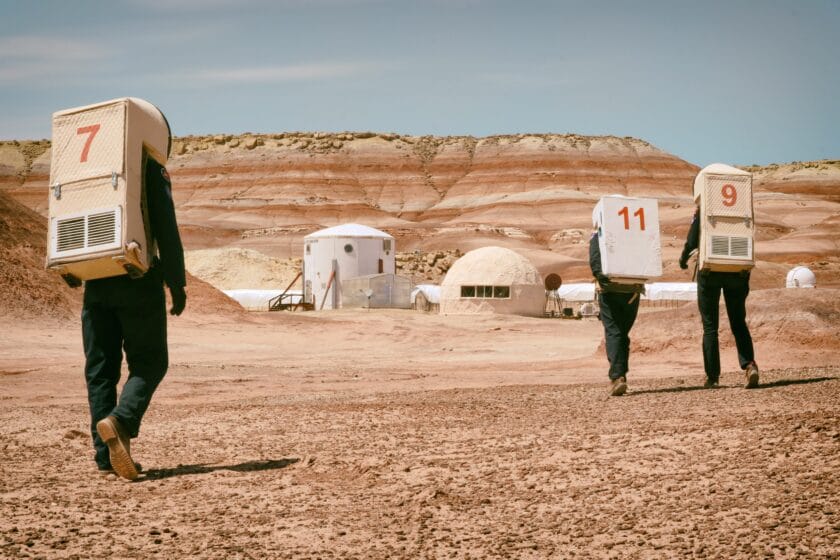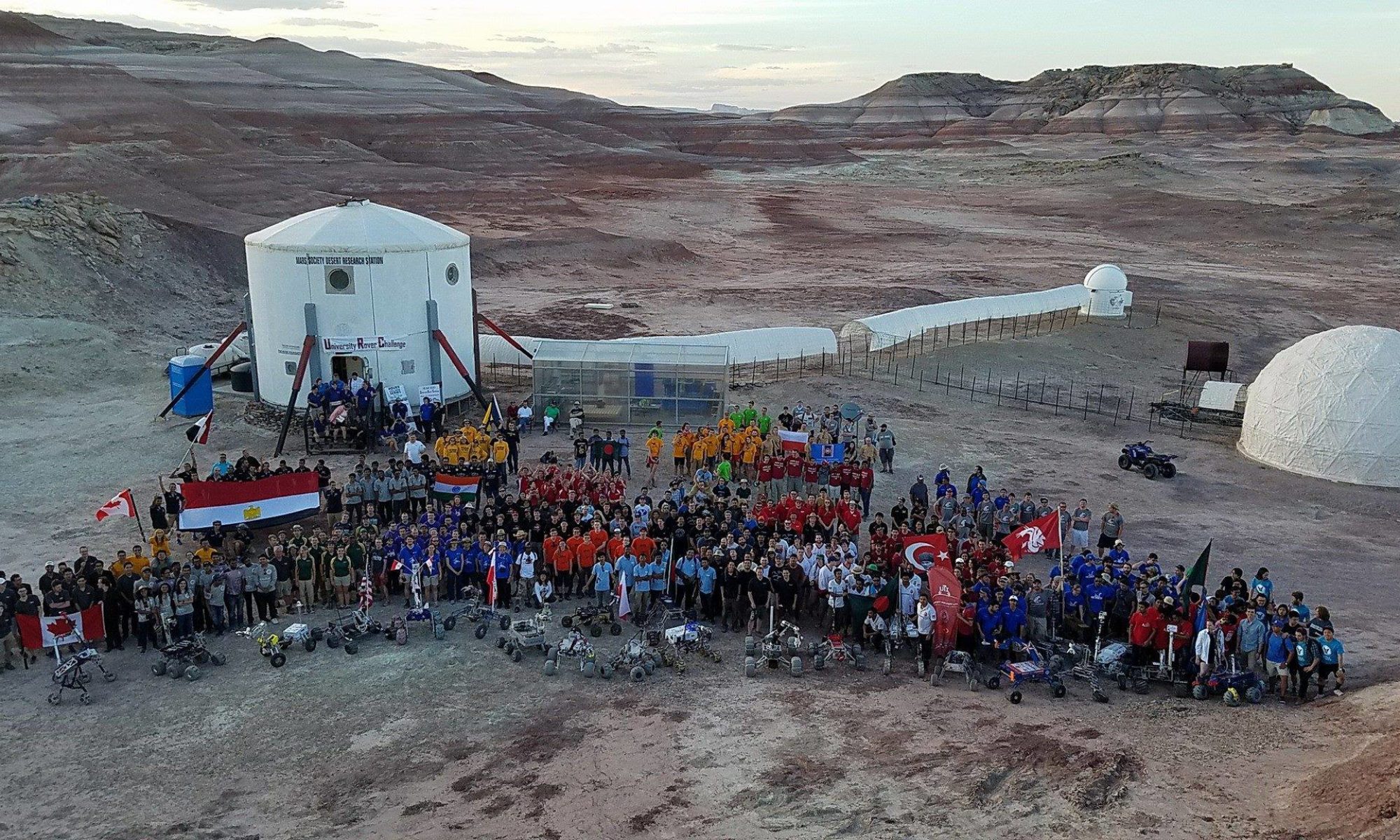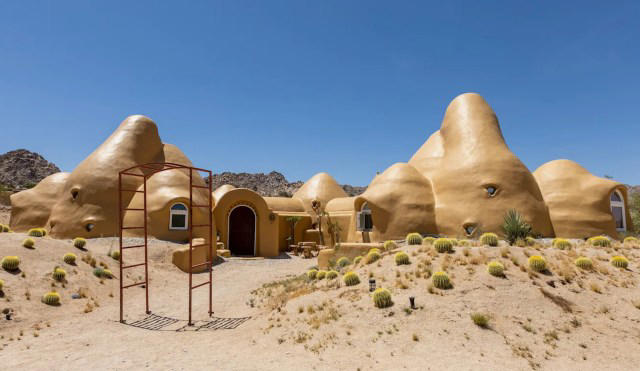New Mars Forums
You are not logged in.
- Topics: Active | Unanswered
Announcement
#1 2021-11-06 17:19:06
- SpaceNut
- Administrator
- From: New Hampshire
- Registered: 2004-07-22
- Posts: 30,107
Business opportunity Lemons for lemonade
Rather than looking at this as being lemons (negatively), we should make lemonade... to generate a revenue source for the Mars Society
The Mars Society <info@marssociety.org>
Thu, Nov 4 at 8:36 AM
MARS SOCIETY ANNOUNCEMENT
Tourists a (Major) Problem at Mars Analog Site (Article)By Dr. Shannon Rupert, Space.com, 11.03.21
The Mars Desert Research Station has become something of a tourist destination.
Dr. Shannon Rupert is an ecologist and educator who has spent more than 20 years doing Mars analog research. She is the longtime director of the Mars Desert Research Station (MDRS), which is owned and operated by The Mars Society. MDRS hosts researchers who conduct their work while in a simulation, living as if they were on Mars. For more details about the MDRS program, please visit: mdrs.marssociety.org. Dr. Rupert contributed this article to Space.com's Expert Voices: Op-Ed & Insights.
It's early spring in the southern Utah desert. After a year-long shutdown in operations due to COVID, I'm back at the Mars Society's Mars Desert Research Station (MDRS), where I serve as director, preparing to welcome two U.S.-based crews to the facility. After a particularly hard day of working on repairs to the water system, I'm awakened in the night by my dogs barking. I look out the small window of my bedroom, which is separated from the station by two hills, and I can see what appears to be bright light shining on one of the buildings. While I struggle to make sense of it, my dogs quiet down, so I drift back to sleep, thinking I hadn't noticed the moon was full.
Months later, our director of public relations receives an email. Attached is a photo of MDRS, all lit up, with the night sky emblazoned above it. In the email, the photographer gives details of his long-duration exposures and how he lit up the station during the night I just described, and spent hours photographing the night sky. He's proud of his work, and thinks nothing of sharing how he trespassed on private land, photographed an entire field station without permission and stayed onsite while I slept a few meters away, unaware of this violation. It still unsettles me thinking about it. Imagine if someone did that in your own backyard.
Fortunately, no crew was in residence at MDRS that night. Visiting teams expect that they may see a person or two when they are out in the field, or someone viewing the station from the road off in the distance. But isolation and a suspension of disbelief regarding our crew simulations are major components to space-related analog research. Future astronauts on the Red Planet will experience a level of isolation that no human has ever gone through, and a large part of MDRS research, led by its crews, focuses on that challenge.
Making this Mars simulation as realistic as possible is key to that research. Crews can accomplish this, but not with constant outside interference. What hinders that effort are drones filming crew members from outside their windows, or people wandering around the facility, poking their heads in buildings or sitting on the hill just outside the front airlock before daybreak. All of these are things that have happened in the last few months at our station in southern Utah. With a growing interest in space and the overload of information on the internet, visitors are far more frequent at MDRS than in the past.
I enjoy welcoming the occasional guest, giving them a close up look of the station when crews are away. One of the best parts about this job is seeing someone's eye light up at the possibility of humans actually going to the planet Mars. That all changed with COVID. Many people fled the reality of the pandemic in their daily lives by escaping to the American Southwest, where they could practice social distancing by exploring the outdoors. There was an increase in websites and social media sharing places to visit.
Unfortunately, MDRS became one of those sites for tourists, and on the internet and in the nearby town of Hanksville, people are saying we are open to the public and/or the station is accessible to everyone. This is not true. From the moment I returned to the station earlier this year, I have spent more time chasing people off the property than welcoming them. Some are confused, some are polite but disappointed, others have been threatening enough that the local police needed to be called, but all felt they had a right to be here.
Our staff has done what it can. We have posted signs defining our lease, letting people know that, according to State of Utah law, MDRS is located on private property and drones are prohibited. We have signs restricting access to the area. We have contacted every website we could find that had misinformation about us, and I've had meetings with local town and business leaders about this growing problem. Is it working? Not all the time, but it is better.
Social media is a huge challenge because misinformation travels like wildfire. People post a photo, and everyone wants to go out to get that same photo on their own. For a while, we had people every day walking in and around MDRS. It turned out that someone had posted a photo on social media with the coordinates to MDRS. Lately, every time I go north of the facility, I see people on a certain hill. I guess that area is the new darling of social media. That's a relief, because fewer people in the area means less interruption of the important work we do here, which will help achieve the Mars Society's goal of putting boots on the Red Planet.
Mars Desert Research Station
The Mars Society
11111 West 8th Avenue, unit A
Lakewood, CO 80215 U.S.A.
www.marssociety.org
https://www.facebook.com/TheMarsSociety
@TheMarsSocietyCopyright (c) 2021 The Mars Society
All rights reserved.(th)
If there is that much interest and one could bring about a real life walk through exhibit of life as a martian. We would be doing lots of good for living on mars by showing the typical from beginning to dream state for mars.
Find land, build duplicates for viewing (all analog stations), show greenhouse gardening for food variety and methods for mars use, show recycling of water and waste, ect...
Not only do tours but make memorabilia for the average junk to be purchase for going there.
Offline
Like button can go here
#2 2021-11-06 19:08:40
- SpaceNut
- Administrator
- From: New Hampshire
- Registered: 2004-07-22
- Posts: 30,107
Re: Business opportunity Lemons for lemonade
Here are some images
Tourists a (Major) Problem at Mars Analog Site (Article)



Sounds like a University should also benefit from such a site....
Offline
Like button can go here
#3 2021-11-06 19:17:06
- tahanson43206
- Moderator
- Registered: 2018-04-27
- Posts: 23,768
Re: Business opportunity Lemons for lemonade
This is certainly a though provoking topic.
The complaint in the original blog article seems to be that having tourists on the site destroys the mental state of trying to simulate being ** on Mars **. In the beginning of the studies/exercises, the site in utah was far enough away so that the fiction of isolation was possible.
The far northern site would NOT have that problem, but it is far less accessible than the Utah site.
If I understand the new topic correctly, it would seem to be suggesting just forgetting about the isolation fiction, and trying for some other set of goals.
Area 51 seems to be fairly well protected against intruders. Perhaps the Defense Department would be willing to work with the Mars Society to insure isolation for a new version of the facility.
(th)
Online
Like button can go here
#4 2021-11-06 20:02:04
- SpaceNut
- Administrator
- From: New Hampshire
- Registered: 2004-07-22
- Posts: 30,107
Re: Business opportunity Lemons for lemonade
I guess that I was not very clear.
If the people want to come to a site like those run by Mars society, then give them what they want but just not the isolated site which is doing the real science.
Give them a fictional site that looks very similar to the ones which mars society operates.
Find suitable land that would fit the part of looking like mars and set up a fake attraction just for the purpose of showing whats going on.
Offline
Like button can go here
#5 2021-11-06 21:41:25
- RobertDyck
- Moderator
- From: Winnipeg, Canada
- Registered: 2002-08-20
- Posts: 8,341
- Website
Re: Business opportunity Lemons for lemonade
Reminds me, many years ago I was contacted by a Mars Society member who lived in Bakers Lake, Nunavut. He wanted to use his aircraft to ferry passengers to FMARS on Devon Island. He wanted an excuse to visit FMARS himself. While I did mention this to Dr Zubrin at the next Mars Society convention, his offer had issues. He owned and operated a Maul aircraft with tundra tires. You may think this ideal for a northern location in Nunavut territory, such as Devon Island. The problem is Canadian air regulations prohibited a single engine aircraft from flying over open water farther than gliding distance to shore. Flying to Devon Island requires flying across open water. The usual way to get there is a commercial flight to Resolute (formerly known as Resolute Bay), then charter a Twin Otter aircraft to Devon Island. A Twin Otter is a larger aircraft with two engines, a Maul has one. Technically a single engine aircraft can fly to Devon Island in winter when Perry Channel is frozen with ice thick enough to allow a Maul or similar aircraft to land on it. But FMARS doesn't operate in winter. So the Society couldn't accept his offer.
FMARS is just too isolated. It's very Mars-like, but expensive to operate because it's hard to access. And people don't want to use it year-round, because it's cold in winter. There's snow on the ground, making any geology or construction simulation difficult. As for detailed temperature, Resolute has the same latitude, it's on the next island beside Devon. Wikipedia has detailed climate data... Resolute, Nunavut
Note: Haughton Crater experiences midnight sun between April 26 through August 15. And sun does not rise between November 4 and February 6. February 7 length of day is 1 hour, 30 minutes, 32 seconds. sunrise and sunset times
Offline
Like button can go here
#6 2021-11-06 21:47:00
- RobertDyck
- Moderator
- From: Winnipeg, Canada
- Registered: 2002-08-20
- Posts: 8,341
- Website
Re: Business opportunity Lemons for lemonade
4 Frontiers Corporation was a spin-off from Bruce Mackenzie's Mars Foundation. A group of individuals who were involved with design of the Mars Homestead Project, Phase 1, the Hillside settlement. They wanted to create a tourist facility that would be a full-size mock-up of the Hillside Settlement. They wanted to build it in Florida, and got some interest from Florida government, but didn't raise enough money.
Offline
Like button can go here
#7 2021-11-07 07:49:31
- tahanson43206
- Moderator
- Registered: 2018-04-27
- Posts: 23,768
Re: Business opportunity Lemons for lemonade
For RobertDyck re #5 and 6 .... thank you for the history of Mars Simulation efforts by Mars Society and by its members ...
For SpaceNut ... it appears to be back to you, to try to think of a way to capture public interest in the Mars undertaking, so as to pull unwanted attention away from the desert site.
An alternative is to take the notes by RobertDyck into account, and try to find a site that is accessible by serious simulation participants, but not easy for average people to reach.
(th)
Online
Like button can go here
#8 2021-11-07 12:22:22
- SpaceNut
- Administrator
- From: New Hampshire
- Registered: 2004-07-22
- Posts: 30,107
Re: Business opportunity Lemons for lemonade
Still going the wrong direction Th, its a fake site for tourist to visit not a real mars simulation by a clone example...think field of dreams, if you build it they will come.
RobertDyck, post 5 is along the lines of a business to get to mars under ealry conditions much like the MDRS. FMARS, Hi-sea ect.
The future state given in the next post 6 by Robert could be included in time.
Start small and expand....
Here is what was done with the failed biosphere 2
https://biosphere2.org/visit/the-biosphere2-experience
Offline
Like button can go here
#9 2021-12-03 18:15:17
- SpaceNut
- Administrator
- From: New Hampshire
- Registered: 2004-07-22
- Posts: 30,107
Re: Business opportunity Lemons for lemonade
Mars society announcement
Earlier this year, he led a crowdfunding campaign which raised over $100,000 for virtual reality development, creating a digital twin of our Mars Desert Research Station in Utah.
I sure would like to walk in a duplicate of it instead of the VR gaming fantasy....
Offline
Like button can go here
#10 2024-03-10 12:56:29
- SpaceNut
- Administrator
- From: New Hampshire
- Registered: 2004-07-22
- Posts: 30,107
Re: Business opportunity Lemons for lemonade
Its not the first time I have thought of making homes out of Mars project locations.
http://mdrs.marssociety.org/


The campus is powered by a 15 kW solar system that feeds a 12 kW battery bank that provides power to everything. A 12 kW generator autostarts when the campus uses more power than the solar can provide in the winter months.
Offline
Like button can go here
#11 2024-03-10 12:58:24
- SpaceNut
- Administrator
- From: New Hampshire
- Registered: 2004-07-22
- Posts: 30,107
Re: Business opportunity Lemons for lemonade
Here is another this time from Nasa as Alien-looking dome home commissioned by NASA gets put on the market: 'A shelter using the most stable of all the architectural elements'
Offline
Like button can go here
#12 2024-03-10 13:24:24
- tahanson43206
- Moderator
- Registered: 2018-04-27
- Posts: 23,768
Re: Business opportunity Lemons for lemonade
For SpaceNut ... thank you for showing this impressive work by the Iranian-American architect Nader Khalili
This forum contains other reports on his work...
Listing agent James Bianco told Business Insider that Iranian-American architect Nader Khalili was "a pioneer" of SuperAdobe, and his methods received some attention from high-profile organizations.
"He was assigned in the mid-'80s by NASA to design for lunar and space habitation, so the result was a shelter using the most stable of all the architectural elements — the arch, or dome — and he also found local materials that would insulate and protect," Bianco said.
In addition to SuperAdobe homes' durability — they have withstood earthquakes up to a 7.6 magnitude in Nepal, according to CalEarth, which was founded by Khalili — they are also well insulated and fire-proof. These factors are especially important as Earth heats up as a result of human-caused pollution, which increases the risk of wildfires.
California is an area prone to these extreme weather events. In August 2020, a 43,273-acre wildfire burned through the Joshua Tree woodland of Cima Dome, as the National Park Service detailed.
That line about fires caught my eye ... an adobe home fitted with covers for openings might survive even the Texas fire storm that occurred recently.
(th)
Online
Like button can go here

